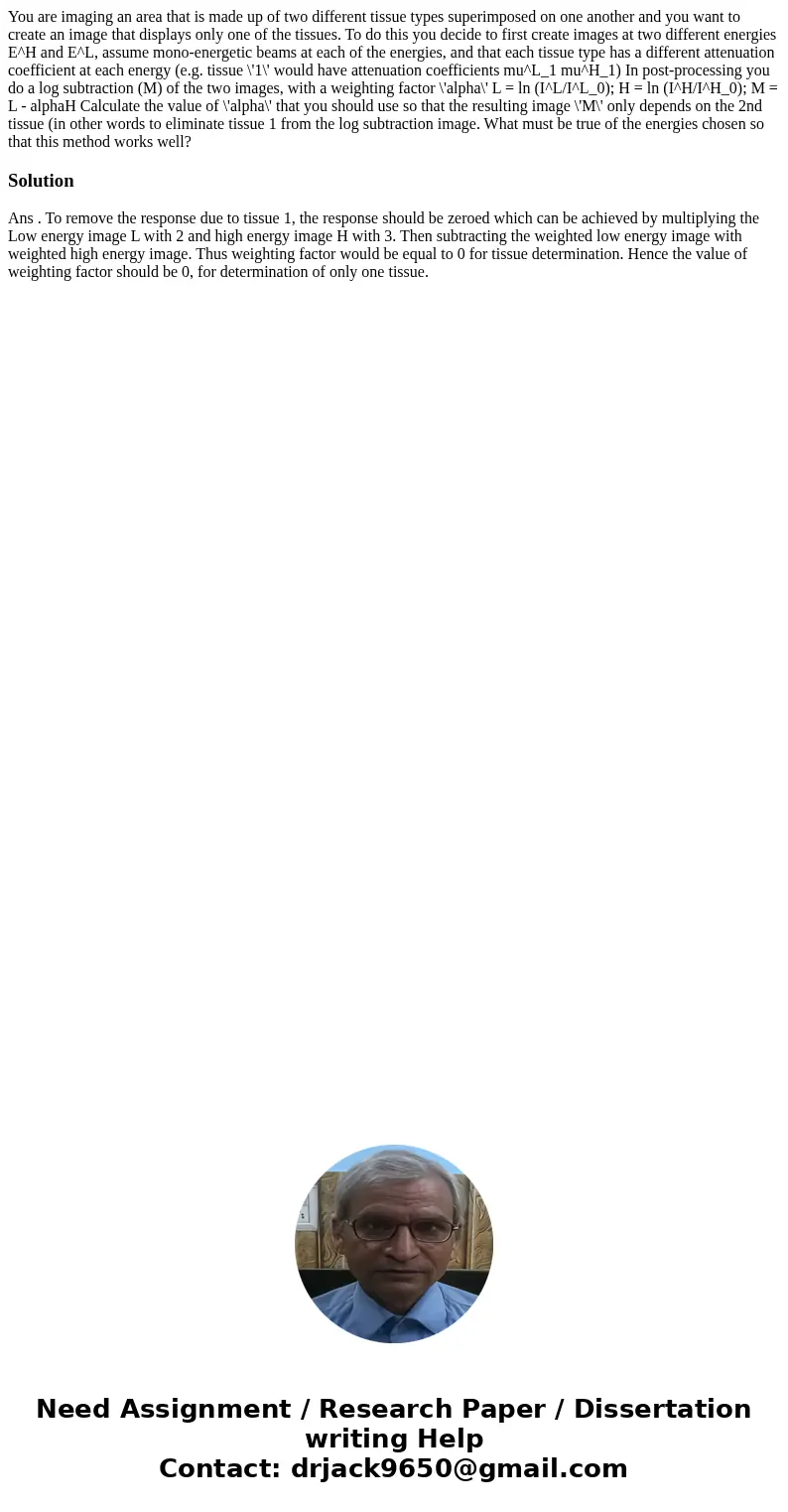You are imaging an area that is made up of two different tis
You are imaging an area that is made up of two different tissue types superimposed on one another and you want to create an image that displays only one of the tissues. To do this you decide to first create images at two different energies E^H and E^L, assume mono-energetic beams at each of the energies, and that each tissue type has a different attenuation coefficient at each energy (e.g. tissue \'1\' would have attenuation coefficients mu^L_1 mu^H_1) In post-processing you do a log subtraction (M) of the two images, with a weighting factor \'alpha\' L = ln (I^L/I^L_0); H = ln (I^H/I^H_0); M = L - alphaH Calculate the value of \'alpha\' that you should use so that the resulting image \'M\' only depends on the 2nd tissue (in other words to eliminate tissue 1 from the log subtraction image. What must be true of the energies chosen so that this method works well? 
Solution
Ans . To remove the response due to tissue 1, the response should be zeroed which can be achieved by multiplying the Low energy image L with 2 and high energy image H with 3. Then subtracting the weighted low energy image with weighted high energy image. Thus weighting factor would be equal to 0 for tissue determination. Hence the value of weighting factor should be 0, for determination of only one tissue.

 Homework Sourse
Homework Sourse